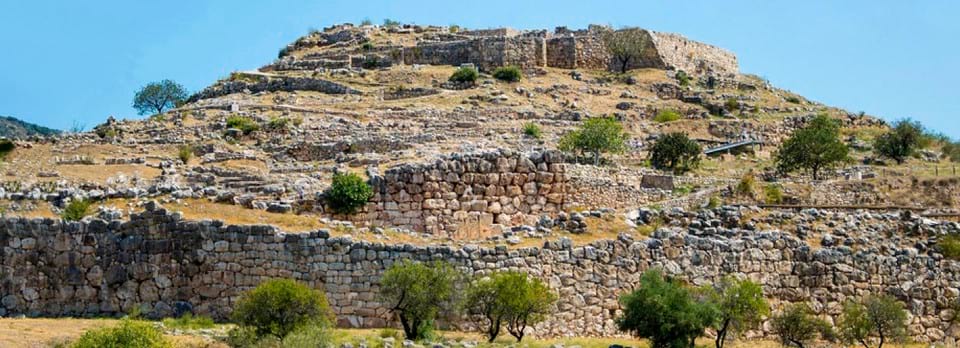
First inhabited from Neolithic times, Mycenae became a major centre of Greek civilisation during the late Bronze Age, reaching its peak between 1350 and 1200 BC when it dominated the Greek world. It is best known as the home city of Agamemnon, leader of the expedition against Troy to recapture Helen. Its prominent role in the Iliad has inspired poets, writers and artists throughout the centuries.
Mythology
According to myth, the founder of Mycenae was Perseus, son of Zeus and Danaë, the daughter of the King of Argos, Akrisios. After Perseus, three generations of his descendants then ruled at Mycenae. The last of these was Eurytheus who is best known for commanding Hercules to perform his twelve labours.
Eurytheus died childless and was followed by Atreus, the son of Pelops (after whom the Peloponnese is named). Atreus was the father of Agamemnon.and Menelaus, who went on to become kings of Mycenae and Sparta. It was Agamemnon, who instigated the Trojan War by sending a thousand ships to Troy to recapture Helen.
Legend has it that when Perseus left for Tiryns he told the one-eyed giant Cyclops to build the walls at Mycenae using enormous stones that no humans could lift, hence the term “Cyclopean”.
History
Mycenae is situated on a small hill 275 metres in height which overlooks the fertile Argive plain and is strategically well placed to command both sea and land routes. Traces have been found of Neolithic settlements as far back as the 7th millenium BC and it appears to have been continuously occupied from about 5000 BC.
In the early second millenium BC a settlement was established on the hill as is evidenced by a cemetery dating to that period ("Grave Circle B"). The monumental tombs in this funerary enclosure contained extravagant grave gifts suggesting that around 1700 BC a hierarchical society had evolved with rulers and aristocrats. By about a hundred years later in this earlier Mycenean period, the social structure had developed further with a king ("wanax") at its head. There was a large central building on the hill, and a second and more complex funerary enclosure ("Grave Circle B"). At about this time the first Tholos ("beehive") tombs were erected.
Most of the structures which are visible at the site today relate to the period between 1350 and 1200 BC when Mycenae was at its peak. These include a palace at the highest point of the acropolis built in the style typical of the Mycenean era. The large Megaron (throne room) had a central hearth underneath an opening in the roof which was supported by four columns, while a throne was positioned against a wall to the side. At the northeast corner of the citadel there was an entrance to a water storage system with a steep tunnel leading 18 meters down to an underground cistern (visitors are advised to bring torches!).
At its peak, Mycenae had a population of about thirty thousand and was the centre of the Mycenean civilisation of mainland Greece and the Aegean islands. Archeological evidence shows that Mycenae formed part of a vast commercial trade network which encompassed the entire Mediterranean, Egypt, Asia Minor and the Levant. Precious metals such as gold, silver and bronze were imported as well as ivory from Syria along with gem stones such as lapis lazuli from central Asia. The dominance of Mycenae was such that the entire Mediterranean region had a relatively homogeneous culture.
An important legacy of this period is the numerous clay tablets inscribed with the first known form of Greek, a syllabized script known as "Linear B" which predates modern Greek script by several centuries. Apart from their linguistic significance, the records are evidence of a highly systematic bureaucracy overseeing a complex political and economic organisation.
By 1200 BC, Mycenae's importance was beginning to decline and at some point in the 12th century BC its dominance came to an end. Along with all the other Mycenean palaces of southern Greece, Mycenae suffered complete destruction, as part of the phenomenon known as the "Bronze Age Collapse".
During the following centuries and throughout the Archaic period the citadel continued to be occupied but was sparsely populated and of relatively little importance (although at one stage a temple was built in honour of the goddess Hera).
In the Classical period Mycenae had grown sufficiently in size to be able to send a contingent of eighty fighters to take part in the Battle of Thermopylae in 480 BC against the invading Persians. It also took part in the Battle of Plataea a year later. However Argos, which had remained neutral during the Persian Wars, took exception to this and in 468 BC captured Mycenae, destroyed part of its fortifications and expelled the inhabitants.
During the Hellenistic era Mycenae was briefly reoccupied and a small theatre was built over the tomb of Clytemnestra (wife of Agamemnon). But later the site was completely abandoned and by the Roman period had become something of a tourist attraction with visitors coming to see its remains. One of these was the second century Greek traveller Pausanias who wrote a detailed description of the citadel's fortifications and the Lion Gate.
Excavations
The first excavations were conducted in 1841 by the Greek archaeologist Kyriakos Pittakis who found and restored the Lion Gate.
In 1874 Schliemann, fresh from Troy, excavated several deep shafts at the acropolis of Mycenae. And two years later he carried out more excavations, this time with the permission of the Archaeological Society of Athens (ASA) and under the supervision of one of its members. He discovered shaft graves with human, presumably royal, skeletons along with spectacular grave goods including gold artefacts one of which was the so-called "Mask of Agamemnon".
Later, from 1884 to 1902, Christos Tsountas of the ASA cleared a large part of the citadel. And in the twentieth century the British School of Athens carried out further excavations from 1920 to 1955 and from 1958 to 1969.
Work has continued under the auspices of the ASA up to the present day including excavation, restoration and publications. In 1999 Mycenae and the nearby site of Tiryns were jointly recognised as World Heritage Sites.
Click here for information on tickets, opening hours etc
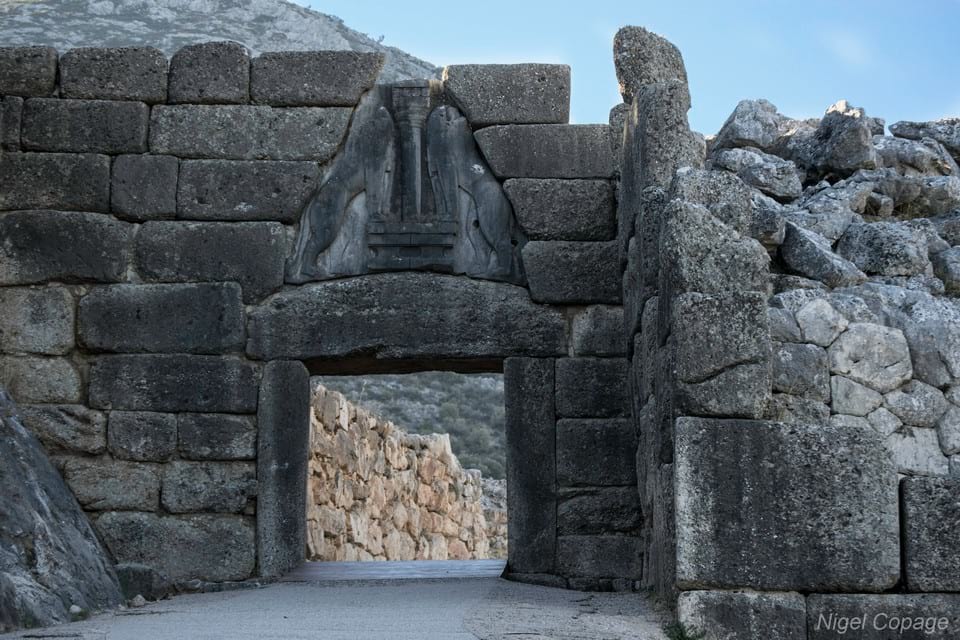 Lion Gate
Lion Gate
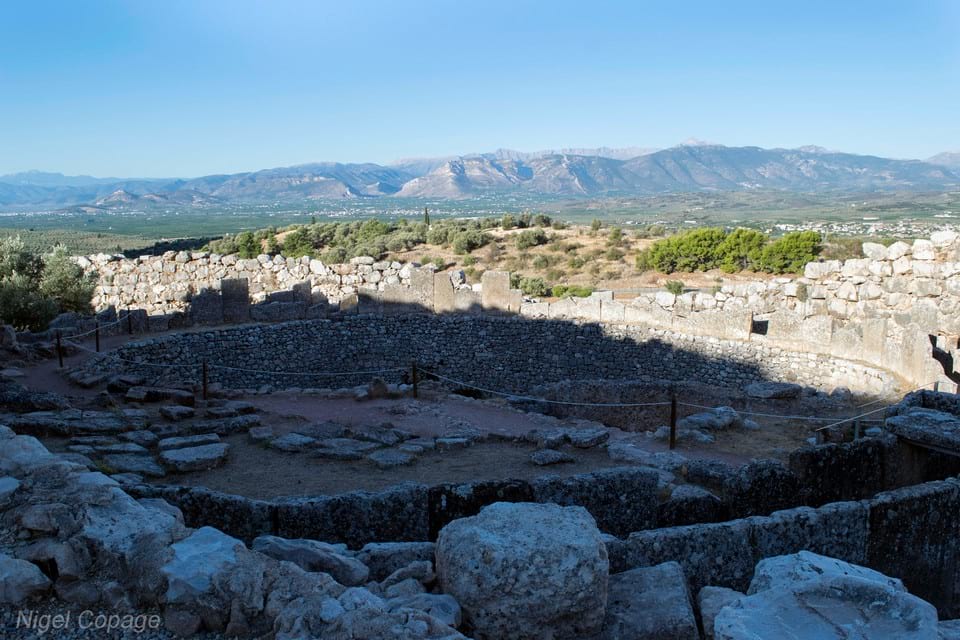 Grave circle A
Grave circle A
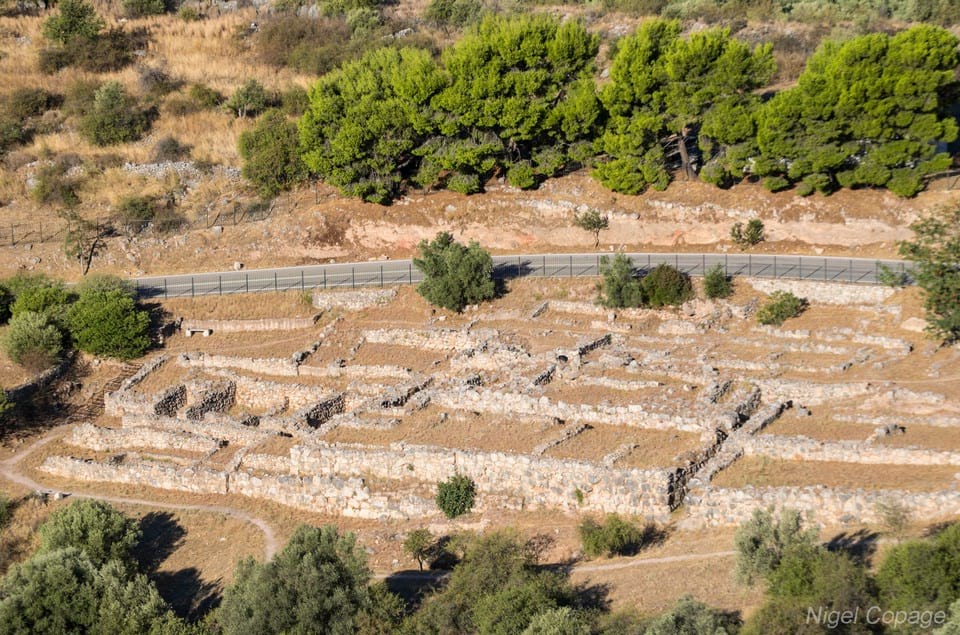 Complex of houses
Complex of houses
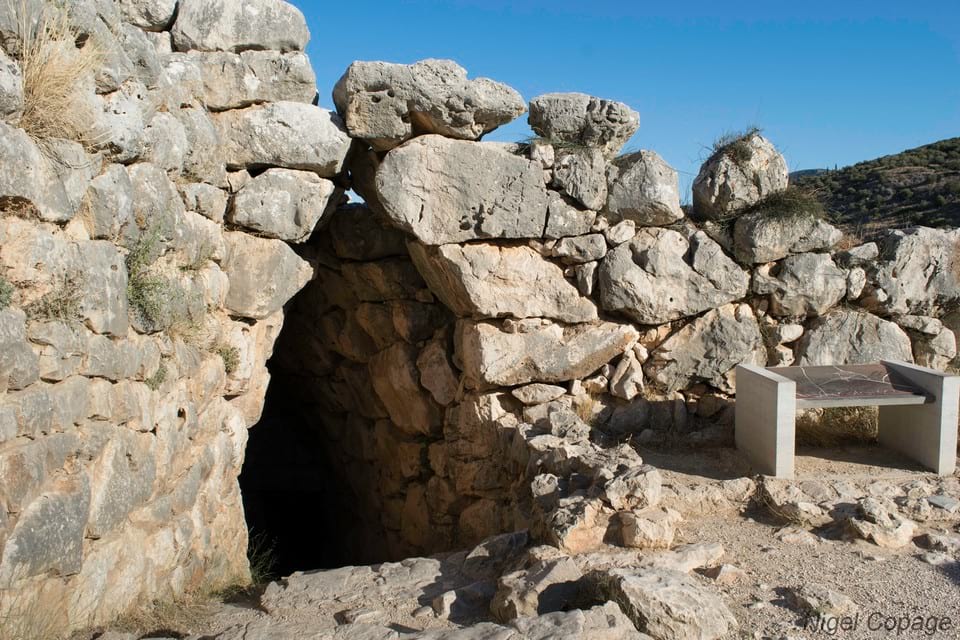 Entrance to the cistern
Entrance to the cistern
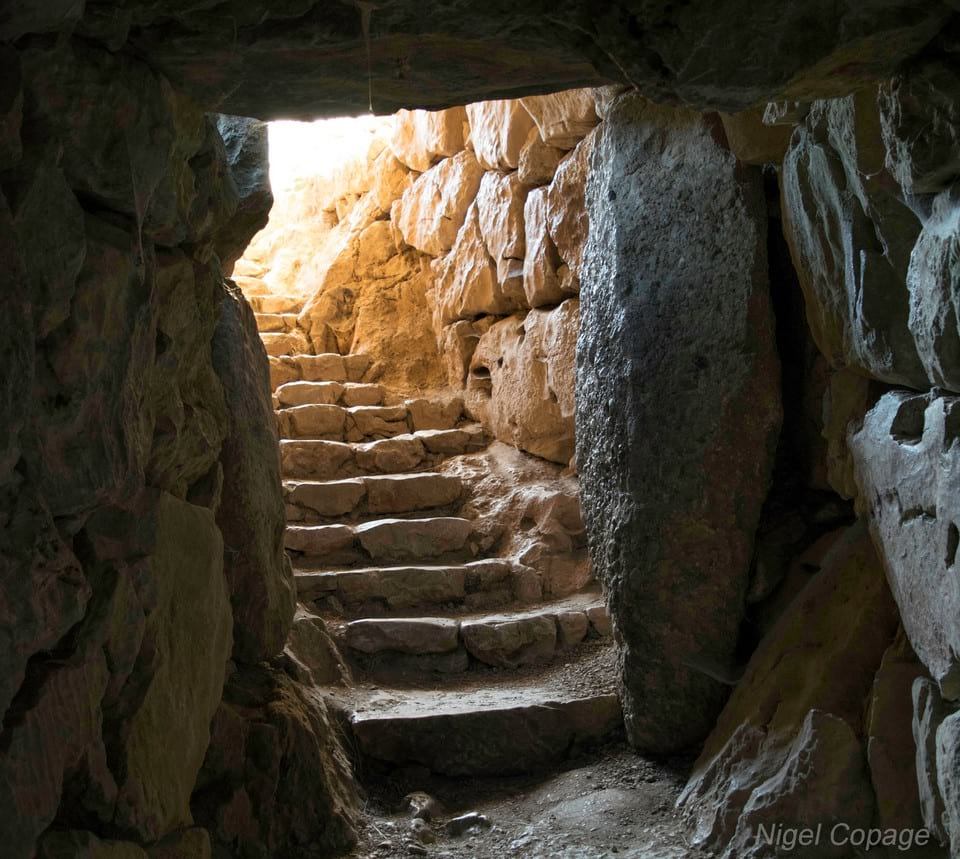 Steps leading down to the cistern
Steps leading down to the cistern
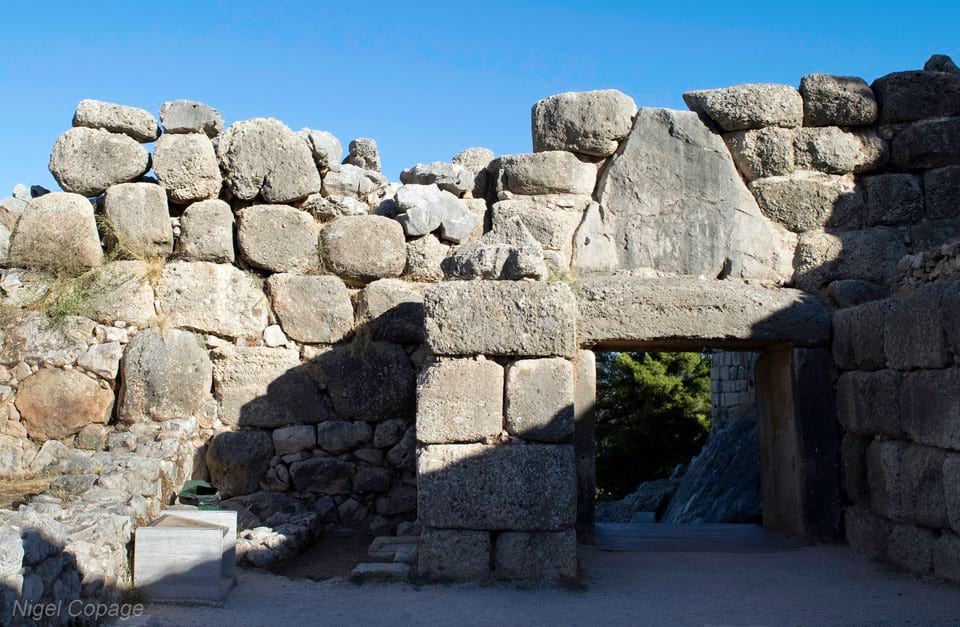 North gate
North gate
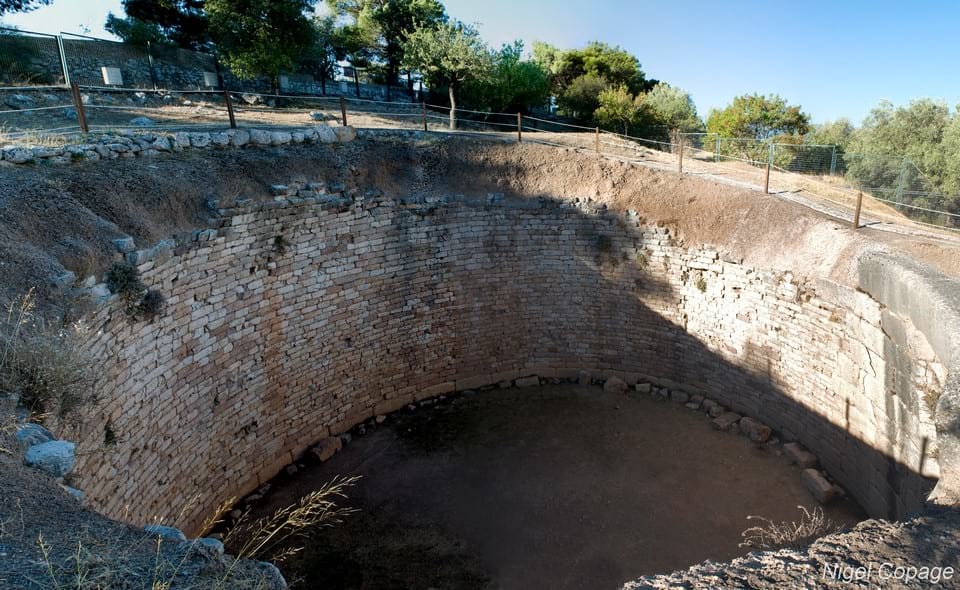 Tholos tomb of Aegisthus
Tholos tomb of Aegisthus
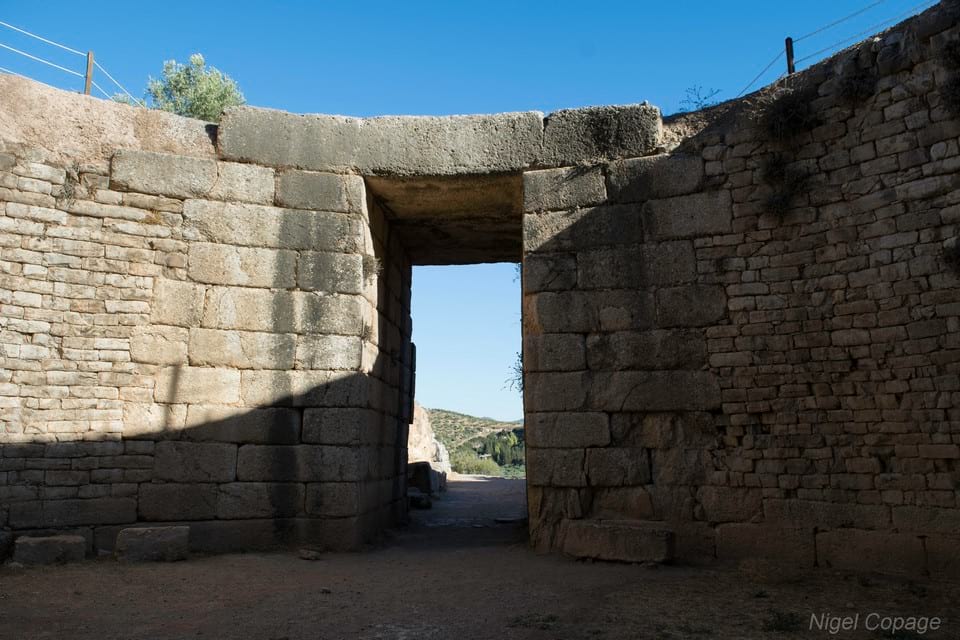 Entrance to tholos tomb of Aegisthus
Entrance to tholos tomb of Aegisthus
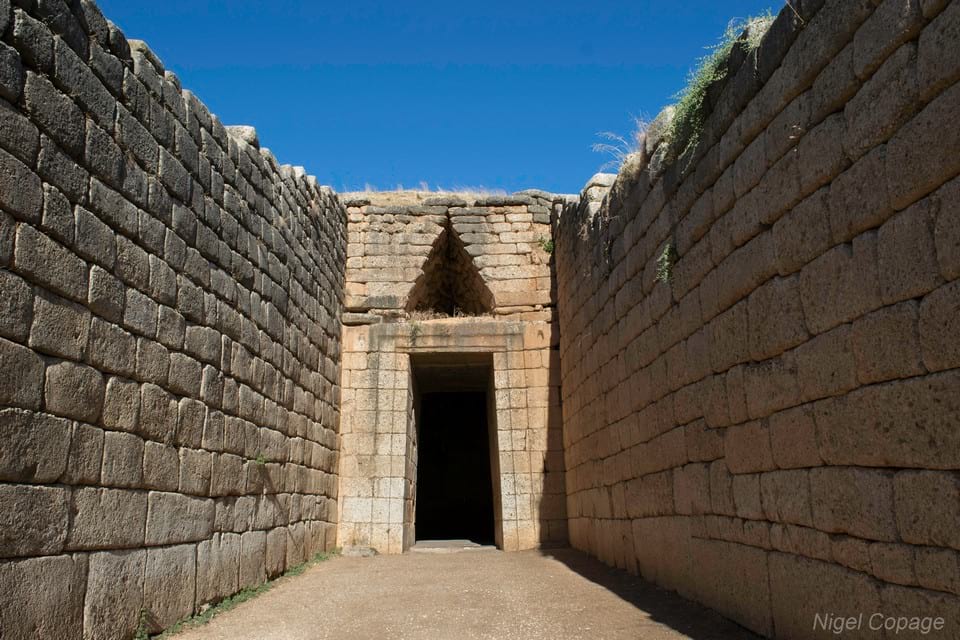 Entrance to the Treasury of Atreus
Entrance to the Treasury of Atreus
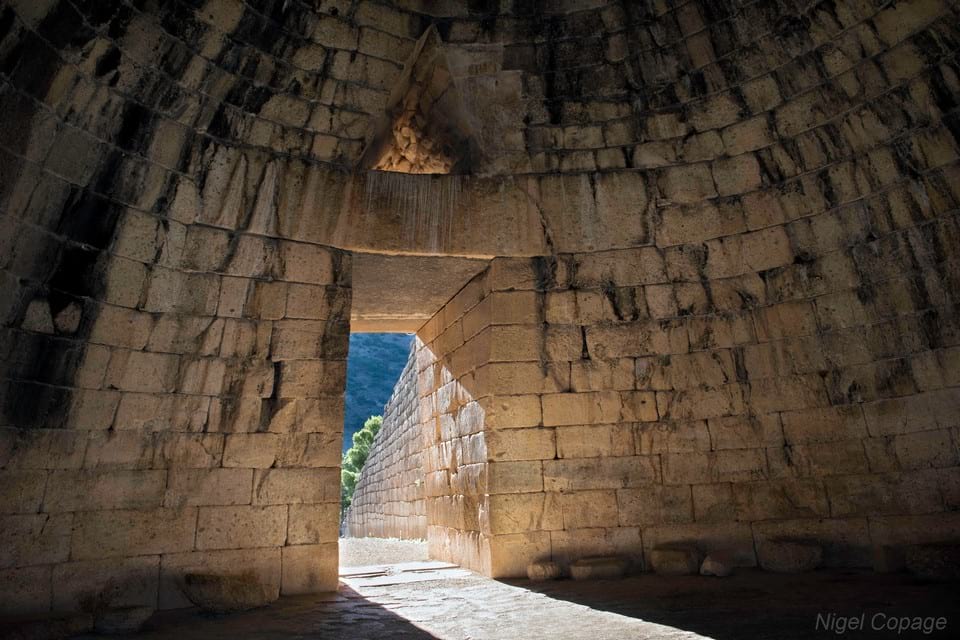 The Treasury of Atreus (a tholos tomb)
The Treasury of Atreus (a tholos tomb)